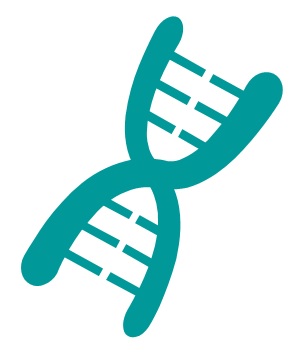PLP (139-151) C140S peptide
[CAS 122018-58-0] – HSLGKWLGHPDKF
PLP (139-151) peptide is a fragment of myelin proteolipid protein (PLP or lipophilin),from amino acid residue 139 to 151 (HCLGKWLGHPDKF – CAS 131334-43-5 ). Myelin proteolipid protein is the major myelin protein from the central nervous system.
PLP (139-151) peptide is commonly used to induce experimental autoimmune encephalomyelitis (EAE) in SJL/J mice. The PLP (139-151) peptide C140S is mutant of the wild-type version where the cystein is replaced by a serine to make the peptide more stable without impacting its antigenic activity.
The peptide PLP (139-151) peptide is conserved in mouse,rat,monkey,dog,pig,bovine.
 Also available: MOG35-55 peptide
Also available: MOG35-55 peptide
Technical specification
 |
Sequence : HSLGKWLGHPDKF |
 |
MW : 1521 ,72 g/mol (C72H104N20O17 ) |
 |
Purity : > 95% |
 |
Counter-Ion : TFA Salts (see option TFA removal) |
 |
Delivery format : Freeze dried in propylene 2mL microtubes |
 |
Other names : CAS 122018-58-0 |
 |
Peptide Solubility Guideline |
 |
Bulk peptide quantities available |
Price
| Product catalog | Size | Price € HT | Price $ USD |
| SB128-1MG | 1 mg | 77 | 96 |
| SB128-5MG | 5 mg | 270 | 337 |
| SB128-2*5MG | 2×5 mg | 385 | 481 |
| SB128-5*10MG | 5×10 mg | 1155 | 1443 |
Quote request
If you are interested in ordering PLP (139-151) peptide C140S,please ask for a quote and we will get back to you shortly.
References on PLP (139-151)
Acute experimental allergic encephalomyelitis in SJL/J mice induced by a synthetic peptide of myelin proteolipid protein.
J.Neuropathol.Exp.Neurol.,1990;49:46. PMID: PLP 139-151
Clinical,histologic,and ultrastructural characteristics of acute experimental allergic encephalomyelitis (EAE) induced by sensitization with a synthetic peptide corresponding to mouse myelin proteolipid protein (PLP) residues 139-151 HCLGKWLGHPDKF were studied in SJL/J mice. Groups of mice were immunized with 20,50,or 100 nmol of the peptide and were killed from seven to 28 days after sensitization or when they were moribund. Beginning on Day 9,the mice showed signs of EAE and the disease progressed rapidly to paralysis. Central nervous system (CNS) inflammation,edema,gliosis,and demyelination were found in all mice killed between Days 10 and 28 and white matter lesion areas correlated with clinical score at the time the mice were killed. Peripheral nerve roots and the cauda equina did not have lesions. Within the range studied,the severity of clinical or histologic disease was the same regardless of the PLP peptide dose. Two of ten mice immunized with 100 nmol and none of 14 mice given smaller doses of a synthetic peptide of mouse myelin basic protein (MBP) showed clinical EAE. These mice had small numbers of CNS lesions that were indistinguishable from those in PLP peptide-sensitized mice. These findings demonstrate that immunization of SJL/J mice with PLP peptide 139-151 produces a disease with the clinical and morphologic features of CNS tissue-,whole PLP-,whole MBP-,and MBP peptide-induced acute EAE. Thus,PLP is a major encephalitogen and immune reactions to epitopes of different myelin proteins may induce identical patterns of injury in the CNS.
Induction of experimental allergic encephalomyelitis by myelin proteolipid-protein-specific T cell clones and synthetic peptides
Pathobiology. 1991;59(5):305-12. doi: 10.1159/000163668. PMID: PLP139-151
Proteolipid protein (PLP) is the major protein of central nervous system (CNS) myelin. SJL(H-2s) mice immunized with a synthetic peptide corresponding to PLP residues 139-151 (HSLGKWLGHPDKF) develop acute experimental allergic encephalomyelitis (EAE). In the present study a T cell line and 4 clones were derived from SJL/J mice following immunization with this synthetic peptide. Severe clinical and histological EAE could be induced by adoptive transfer of the peptide-specific T cell line and 3 of 4 T cell clones. The T cell line/clones all responded strongly to PLP peptide 139-151 in in vitro proliferative assays. However,two different reactivity patterns emerged when truncated PLP peptides 141-150 and 141-149 were tested,suggesting that more than 1 epitope may be present within the PLP 139-151 determinant. To evaluate the encephalitogenic potential of the truncated peptides,we compared the ability of 2 truncated PLP peptides to induce EAE in vivo and proliferative responses in vitro. Immunization with PLP peptide 141-150 induced acute EAE in about 70% of mice tested,but PLP peptide 141-149 induced a comparatively mild form of EAE in 4 out of 9 mice tested. Lymph node cells from mice immunized with these peptides showed in vitro proliferative responses to each of the peptides,but the response to peptide 139-151 was always strongest. These combined in vivo and in vitro data further define the epitopes involved in PLP-induced EAE in SJL mice. Furthermore,the availability of multiple PLP-specific T cell clones will enable us to study the diversity of the T cell repertoire to PLP.
